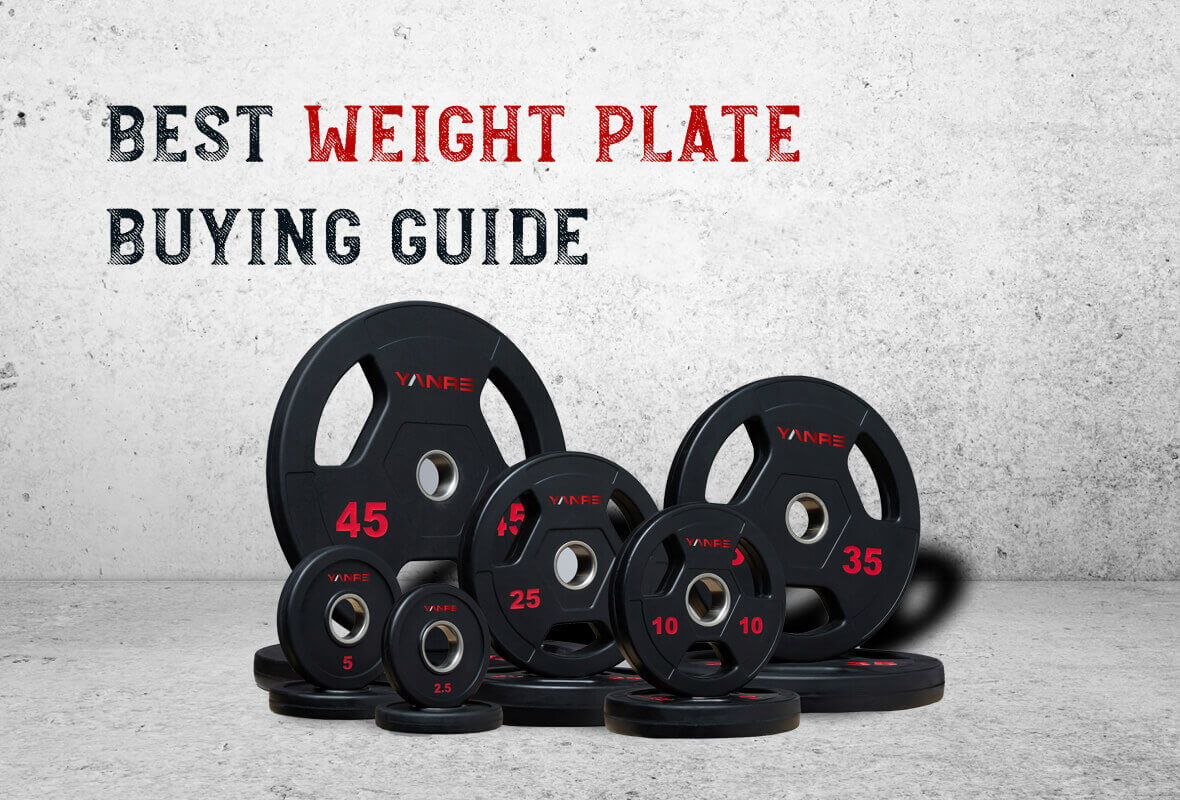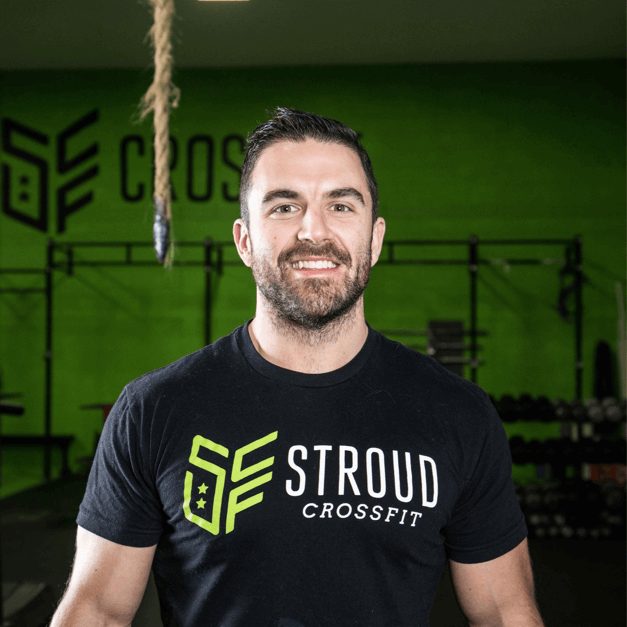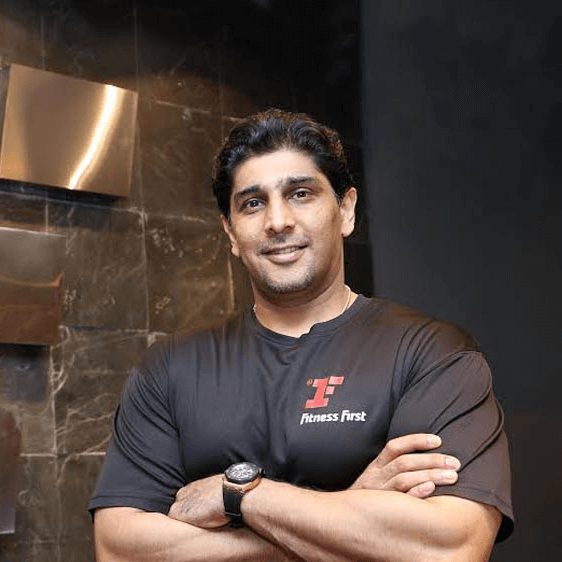Weight plates are essential gym accessories for all commercial gyms & fitness centers. There are many variations available like bumper plates, weight discs, barbell plates, etc.
They might look the same, but they are not similar at all. Even standard weight plates have various types to choose from.
There is a wide variety of weight plates available in the wholesale market to suit the needs of users of all levels. Weight plates are an expensive accessory & choosing the correct ones is crucial for your bottom line.
If you are in the market for new weight plates, we will tell you what to look for in this article. It has answers to questions like:
- Which are the most suitable weight plates for my commercial gym?
- What are the properties to consider when placing an order for wholesale weight plates?
- What are the traps I should be aware of & avoid when buying commercial weight plates?
Our invaluable buying guide includes opinions & advice from industry professionals & insiders so you can make an informed choice.
Let’s start,
Table of Contents
Concise Comparison Chart
Let’s begin with a concise comparison chart that you can look up for quick facts after going through the article.
There are many types of weight plates available to choose from. Making the correct choice requires in-depth knowledge of all the factors that affect the function & performance of the product.
Unlike the past, traditional weight plates are not the only option. Bumper plates are another versatile choice available.
We will touch upon the differences between the two briefly here. If you want to know more about them, you can refer to our separate buying guide about commercial bumper plates. The key differences between the two plates are as below:
| PROPERTIES | WEIGHT PLATES | BUMPER PLATES | URETHANE PLATES |
| Top Coat | Bare/Painted/Powder-coated/Chrome | Rubber-coated | Urethane-coated |
| Material | Cast iron or Steel | Rubber over metal | Urethane over metal |
| Size | Variable | Standard | Standard |
| Diameter | Varies with weight | Same for all | Same for all |
| Accuracy | Usually not accurate | Varies with brand | Varies with brand |
| Noise-level | Loud | Not significant | Not significant |
| Durability | Low | Not scratch-resistant | High |
| Corrosion | Rusts fast | None | None |
| Smell | None, except when rusts | Rubber smell | Odorless |
| Thickness | Normal | More than urethane-coated plates | Less than rubber-coated plates |
| Average Cost | Low | Mid-range | Expensive |
| Color Coding | Only available in black or grey colors | Black-For training platesStd. color-codes for competition plates | Black-For training platesStd. color-codes for competition plates |
| Drop | Direct drop not recommended | Can be dropped on the floor safely | Can be dropped on the floor safely |
| Bounce | Almost none | Varies according to material & craftsmanship | Varies according to material & craftsmanship |
Types of Weight Plates
Based on Construction: Steel versus Cast-iron
The construction of weight plates is a crucial factor to consider. It is directly related to their function.
Most commercial weight plates have a cast iron construction. Even though they serve the same purpose, cast iron plates are more cost-effective than steel ones. They are also less long-lasting in comparison.
Metallic weight plates of cast iron or steel construction have two types, calibrated weight plates & regular weight plates.
Calibrated Weight Plates
Calibrated weight plates are competition plates & cost more than the standard cast iron weight plates.
Their weight is calibrated or accurate, meaning you know the exact amount that you are lifting.
Calibrated plates are much thinner than standard plates. It allows you to load more of them on a barbell sleeve at a time.

Regular Metal Weight Plates
Iron or steel weight plates have been in use for a long time. The noise level for these weight plates is high but they make up for it in terms of affordability & efficiency.
For professional lifters, calibrated weight plates are a better choice. Branded calibrated weight plates are expensive. There are affordable options like wholesale machined calibrated plates available, as well.
Calibrated weight plates are a long-term investment due to their exact weight & machined surface texture that allows for a firm grip.

Based on Finish & Topcoat
You may have seen weight plates with either a rubber or urethane topcoat in commercial gyms. These weight plates are a cost-effective option. They are safer for the gym flooring due to the cushioning effect of their coating.
Though, not all coated weight plates are safe to drop on the gym flooring.
Then there is the uncoated variety. Uncoated weight plates are not as long-lasting & they make a lot of noise during use.
The choice of either one of these weight plates is a matter of preference.
Based on the finish & the choice of topcoat, there are several types of weight plates, such as Bare or uncoated plates, chrome weight plates, rubber, or urethane-coated weight plates.
Bare Iron or Steel Weight Plates
Bare iron weight plates have no coating on top so rusting is a regular issue with these. Regardless of the type of finish on top, these plates will eventually rust.
Rust does not affect the weight or performance of the plates. Although, the weight plates will look worn out & feel coarse to touch.
Bare iron or steel weight plates are an affordable option. Due to their high noise levels, their use in commercial gyms is not recommended.
There is the issue of inaccurate weight, as well. Most bare iron weight plates suffer from this, especially the ones from cheaper brands.
With some weight plates, the weight can fluctuate up to 5% to 10% even.
Try to avoid the lure of a cheap product & invest in a set of quality weight plates. It will protect your bottom line in the long run.
Pros of Bare Iron or Steel Weight Plates
- Cost-effective
- Firm grip
Cons of Bare Iron or Steel Weight Plates
- Make a clunking sound during use
- Not rust-resistant
- Prone to causing flooring damage
- Weight disparity


Chrome Weight Plates
Weight plates with an entire chrome construction are not available for sale. Steel weight plates have some chrome in them, as it is a part of the making process for steel.
Weight plates with a chrome finish are available in the market, though. The chrome finish makes them durable & long-lasting.
Pros of Chrome Weight Plates:
- Shiny finish
- Cost-effective
- Higher durability than uncoated weight plates
- Available in rubber-coated & urethane-coated types

Rubber-coated Weight Plates
Weight plates have an iron or steel core with a coating on top. The coating is usually rubber. Rubber-coated weight plates are durable & won’t damage the floor or themselves when dropped.
The rubber coat is not scratch-resistant.
These plates are the perfect choice for people that want a durable product regardless of its looks or aesthetic. Be ready for the smell specific to all rubber products, though. The rubber smell is especially pungent in mediocre quality weight plates.
Rubber-coated weight plates also go by the name, Non-standard Olympic plates. They get this name because of the grip cut into them for easy handling & the smaller rim compared to traditional Olympic weight plates.
Pros of Rubber-coated Weight Plates
- Cost-effective
- Durable
- Cushioning effect
Cons of Rubber-coated Weight Plates
- Rubber odor
- Not Scratch-resistant

Urethane-coated Weight Plates
Urethane-coated weight plates are the more durable & expensive counterparts of rubber weight plates. They are similar in size to rubber plates but are more scratch-resistant & cushioning.
These weight plates offer better protection to the gym flooring, walls, & other equipment.
If you want to invest in a durable & long-lasting set of weight plates, there is no better choice than the urethane-coated ones.
They are sturdy, hardwearing, odorless weight plates with a glossy & aesthetic look that lasts a long time.
More of these can be put on the barbell sleeve because they are thinner than rubber-coated plates of the same weight class. It is easier to add them with thicker bumper plates, as well.
Between rubber & urethane, urethane is the superior choice of coating. Though, rubber-coated weight plates are better for the budget-buyer. Keep the rubber smell & low scratch resistance in mind when buying these, though.
Pros of Urethane-coated Weight Plates
- Higher durability
- Odorless
- Higher scratch resistance
- Thinner compared to rubber plates of the same weight class
Cons of Urethane-coated Weight Plates
- Expensive

Structure of Weight Plates
A commercial weight plate is not just a metallic disc, it is the sum of all its parts. It is better to consider each part of the weight plate individually before committing to buy a set.
Plate
The construction of the weight plate is of utmost importance. Both steel & cast-iron weight plates are readily available in the market, though steel plates are much better than cast-iron ones.
Handle or Grip
Handles or grips are a welcome add-on feature for commercial weight plates. Lighter weight plates of about 10-pounds or so are easy to lift & load in the absence of handles. Weight plates heavier than that (35 lbs. & above) will require handles or grips to move.
Stay away from smooth texture weight plates. They may appear aesthetically pleasing, but they are difficult to use.
Handles or grips essentially transform the weight plates into free weights. You can use them without any need for loading on a barbell.
By lifting them with the handles, you can perform shrugs, carries, etc., with just the weight plate itself.
Bevel or Lip
A bevel or lip is a slope-like slanted surface at the outer edge of the weight plate. It allows you to grip a weight plate by sliding your fingers under it.
It separates weight plates from each other when they are on the barbell sleeve & makes them easy to lift when lying flat on the ground.
Properties of Weight Plates
You should consider these five things before committing to placing a wholesale order for commercial weight plates:
Shape
The shape of the weight plate is one of the first things you should consider. Almost all weight plates are spherical or round. That is the standard shape for commercial plates.
Though, 8 or 12-sided weight plates are available too. These are difficult to come by these days, but once were very popular among buyers.
Their popularity was due to their unique shape. Using these weight plates for lifting can prove dangerous. Because when dropped to the floor, they do not come to a complete stop.

Size
The central hole in a weight plate is crucial in deciding the type of weight plate. Based on it, the weight plates are divided into various sizes, such as:
- Olympic size weight plates
- Standard size weight plates
- Studio size weight plates

Olympic Size Weight Plates (2-inch Central Hole)
Olympic weight plates have a 2-inch or a 5-centimeter central hole. They are compatible with Olympic barbells & most types of plate-loaded gym equipment.
These are available in all commercial gyms & fitness centers.
Olympic weight plates are not exclusive to Olympic lifting. They are the perfect accessory for all sorts of weightlifting routines.

Standard Size Weight Plates (1-inch Central Hole)
Standard weight plates have a 1-inch central hole that makes them incompatible with Olympic barbells. These weight plates are usable in gyms, though.
Standard plates are a part of home gyms mostly. They are difficult to come by in commercial set-ups because of the exclusive use of Olympic barbells.
These weight plates are suitable for beginners because they are a cost-effective option. Standard plates are not the best choice for performing complex compound lifts either.

Studio Size Weight Plates (30 mm Central Hole)
Studio weight plates have a 30 mm central hole. As the name implies, these are mainly for studio classes.
It is easy to differentiate these from other weight plates because of the small size & the array of color options.
Studio discs are compatible with studio barbells. They have rubber-coated handles & are easy to store in the corner of the gym.
Although studio weight plates are not for powerlifting, you can use them for group exercise activities (E.g., Les Mill’s body pump). Avoid using these on gym flooring as they are not suited to higher reps during lifting.

Thickness
The thickness of a weight plate affects its impact on the ground once it comes down from a lift.
Thicker weight plates like bumper plates are a safe & secure option for this.
Bumper weight plates are perfect for home gym set-ups & Functional Training routines. It is because not many can be loaded on the barbell at once due to their thickness.
For commercial gym set-ups & powerlifting routines, choose Olympic weight plates.

Weight Tolerance
Weight tolerance is the difference between the actual weight & the stated weight of a weight plate. The unit for weight tolerance is the percentage.
In a perfect situation, there should be no difference between the actual & stated weight. That is not always the case. Manufacturers aim for accuracy, but factors like difficulty in molding the material may cause a disparity.
Weight tolerance affects professional lifters the most. Unequal weights on both sides of the barbell are neither effective nor safe.
For example, a 45-pound weight plate with a weight tolerance of 2% may be 0.9-pounds above or below the listed weight.
For Olympic training events, you should have a weight tolerance of 2% at most. For standard weight training, it can be as high as 4%.
Durability
The durability of weight plates is directly related to their lifespan. Mediocre weight plates will save you money in the short term, but they are bad news for your bottom line.
If you want to make an investment that will benefit you in the long run, then choose urethane-coated weight plates. Once bought, they will maintain their condition & last your gym a long time.
Weight plates, in general, are quite sturdy. The cast iron construction prevents the plate from fully breaking. Though, cracks & scratches are frequent near the handles or grips.
Urethane-coated weight plates tolerate such damage better than other plates.
Tips and Traps of Buying Weight Plates
The wholesale market is full of quality & sturdy weight plate sets. You should keep in mind that there are almost as many mediocre or low-quality versions available, as well.
Below are some tips to follow & traps to avoid when looking for durable weight plates for your commercial gym.
Barbell and Weight Plate Compatibility:
- Not all weight plates are compatible with every barbell. Before loading the barbell, confirm that the diameter of the sleeve matches the size of the central hole of the weight plate. A 2-inch Olympic barbell will fit an Olympic weight plate with a 2-inch central hole well.
- If you have barbells other than Olympic ones, then the first thing to do is to confirm the diameter of the weight plate sleeve. It will give you a better idea of what type of weight plates to buy.
- If you don’t pay attention to these rules & buy weight plates that fit loosely over the barbell sleeve. You will end up with an unstable barbell with slipping & sliding weight plates during use.
Look for Ease of Handling
Extra add-ons & accessories like handles, grips, raised inserts to increase the convenience level of weight plates during use.
Smooth weight plates may prove to be slippery & finding a place to grip them securely while loading & unloading on the barbell can be challenging.
Handles, grips, etc., make this process easy, quick, & convenient. Raised inserts allow for extra space when a weight plate is lying flat on the ground. You can slip your fingers under it & lift it with ease.
Conclusion
Weight plates are essential to all kinds of strength training & are an integral part of any commercial gym.
This buying guide has all the information that you will need when looking to buy commercial weight plates.
Now that you have all this information at your disposal, you can make a more informed choice.
Yanre Fitness manufactures a wide range of weight plates for all kinds of budgets & buyers. Visit our official website to know more.
Contact us & ask for a quote today!
Related acticles:






